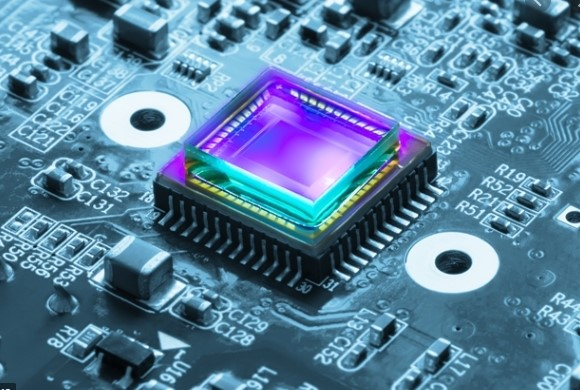Second-tier chipmakers ramp up investments amid chip shortage
By Apr 25, 2021 (Gmt+09:00)
CarlyleŌĆÖs Rubenstein sees commercial real estate undervalued


Infrastructure secondaries continue to rise amid inflation: Stafford


Goldman Sachs names Choi Seoul office chief


Golf equipment maker Taylormade to refinance $222 mn of debt


NPS' former key players move to law firms as its voting power increases



Second-tier chipmakers have been ramping up investment to boost their footing in the industry as they expect chip demand to gradually increase in line with the adoption of artificial intelligence technology and the intensifying supply shortage.
Last week, Taiwan-based memory chipmaker Nanya Technology announced plans to invest around 300 billion NTD ($11 billion) to set up a 12-inch advanced semiconductor fabrication plant in New Taipei City. The construction is set to begin this year with the production of DRAM chips with 10-nanometer class process technologies slated for 2024.
Nanya is the world's fourth-largest DRAM chipmaker, holding a 2.9% market share in the DRAM market as of the fourth quarter of 2020, according to market research firm TrendForce. There is a considerable gap between Nanya and industry leaders Samsung Electronics Co. and SK Hynix Inc., with 42.1% and 29.5% market shares, respectively.
Nanya is likely to have decided on a large-scale investment because the DRAM market is growing at an extremely fast pace -- making it difficult for Samsung Electronics and SK Hynix to dominate the market, which is projected to grow from $65.3 billion last year to $104.4 billion in 2022.
Nanya plans to utilize extreme ultraviolet (EUV) lithography technology to narrow its gap with the market leaders.
In the NAND flash segment, US chipmakers Western Digital and Micron have been pushing to expand their foothold in the market as they both consider acquiring the worldŌĆÖs No. 2 NAND flash company, Kioxia Holdings.
As of Q4 2020, Samsung Electronics was in the lead with a 32.9% market share in the NAND flash market, followed by Kioxia with 19.5%, Western Digital with 14.4%, SK Hynix with 11.6% and Micron with 11.2%.
If Western Digital merges with Kioxia then the company would exceed Samsung Electronics' market share and position itself as the industry frontrunner.
Meanwhile, US-based semiconductor foundry GlobalFoundries Inc. has been stepping up investment despite the global foundry market's supply shortage.
Industry watchers say the US administration's initiative to foster semiconductors served as a driving force behind the company's decision.
GlobalFoundries plans to inject around $1.4 billion this year to increase production in its US, Singapore and Germany-based plants. The company is also eyeing an initial public offering in 2022, with its enterprise value expected to reach $20 billion.
GlobalFoundries used to be the world's second-largest foundry, trailing industry giant Taiwan Semiconductor Manufacturing Company (TSMC). But the company lost some footing in 2017 when it gave up 7-nanometer processing because of the excessive cost involved.
Last year, the firm's market share dropped to 7%, making it the world's fourth-biggest foundry.
While second-tier chipmakers are gearing up, Samsung Electronics -- currently the world's No. 1 DRAM and NAND flash maker and the world's second-largest foundry -- has yet to lay out clear countermeasures.
Based on its annual investment plan, Samsung Electronics is expected to invest around 30 trillion won ($27 billion) in facility investments but the company has yet to disclose plans regarding its US-based foundry expansion and additional Pyeongtaek fab investment.
Write to Jung-soo Hwang at hjs@hankyung.com
Danbee Lee edited this article.
-
 EarningsHyundai Motor Q1 net profit triples; chip shortage dims Q2 outlook
EarningsHyundai Motor Q1 net profit triples; chip shortage dims Q2 outlookApr 22, 2021 (Gmt+09:00)
4 Min read -
 Semiconductor shortagesChip shortage worsens, keeps Samsung execs on edge
Semiconductor shortagesChip shortage worsens, keeps Samsung execs on edgeApr 19, 2021 (Gmt+09:00)
3 Min read -
 Factory suspensionGM Korea to halt 2 main plants next week on automotive chip shortage
Factory suspensionGM Korea to halt 2 main plants next week on automotive chip shortageApr 15, 2021 (Gmt+09:00)
2 Min read -
 Chip shortageShares of chip machinery makers rise on foundry boom
Chip shortageShares of chip machinery makers rise on foundry boomApr 09, 2021 (Gmt+09:00)
4 Min read -

-
 M&AsSK Hynix's Intel NAND chip deal wins US regulatory approval
M&AsSK Hynix's Intel NAND chip deal wins US regulatory approvalMar 12, 2021 (Gmt+09:00)
1 Min read -
 Semiconductor shortagesMemory chip shortage may drive SSD price hike in Q2
Semiconductor shortagesMemory chip shortage may drive SSD price hike in Q2Mar 10, 2021 (Gmt+09:00)
2 Min read -
 Semiconductor shortagesQualcomm chip shortage may squeeze global smartphone production
Semiconductor shortagesQualcomm chip shortage may squeeze global smartphone productionMar 08, 2021 (Gmt+09:00)
3 Min read -
 Semiconductor shortagesNatural disasters further tighten global chip supply
Semiconductor shortagesNatural disasters further tighten global chip supplyFeb 17, 2021 (Gmt+09:00)
3 Min read -
 Semiconductor shortagesChip shortages spread to backend firms, disrupting supply chains
Semiconductor shortagesChip shortages spread to backend firms, disrupting supply chainsFeb 15, 2021 (Gmt+09:00)
2 Min read


